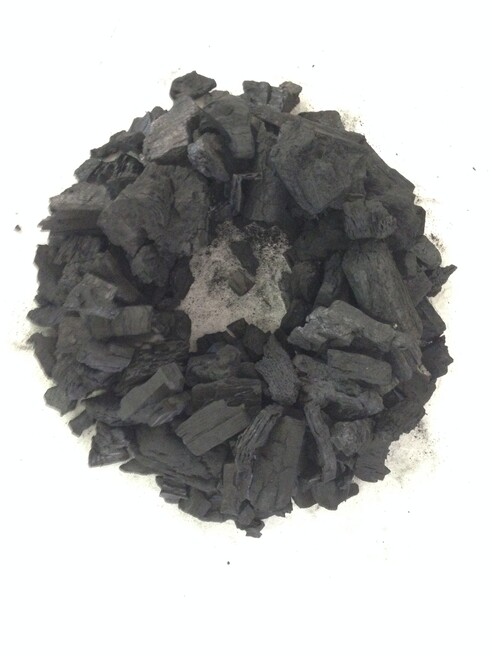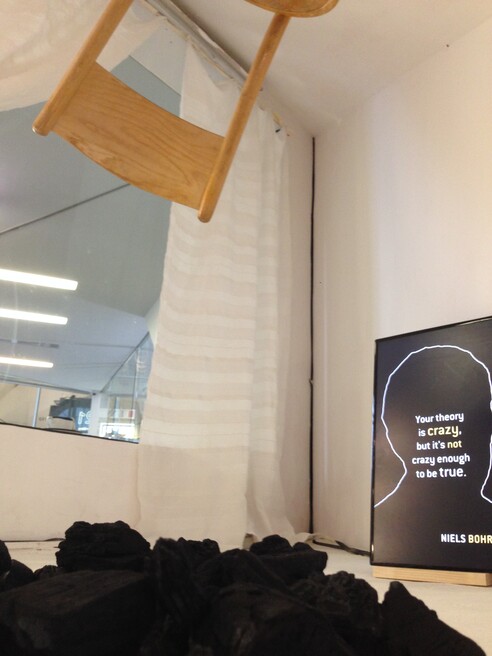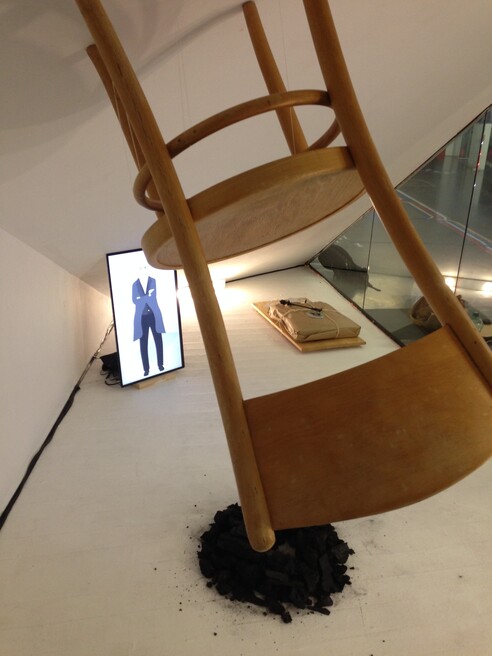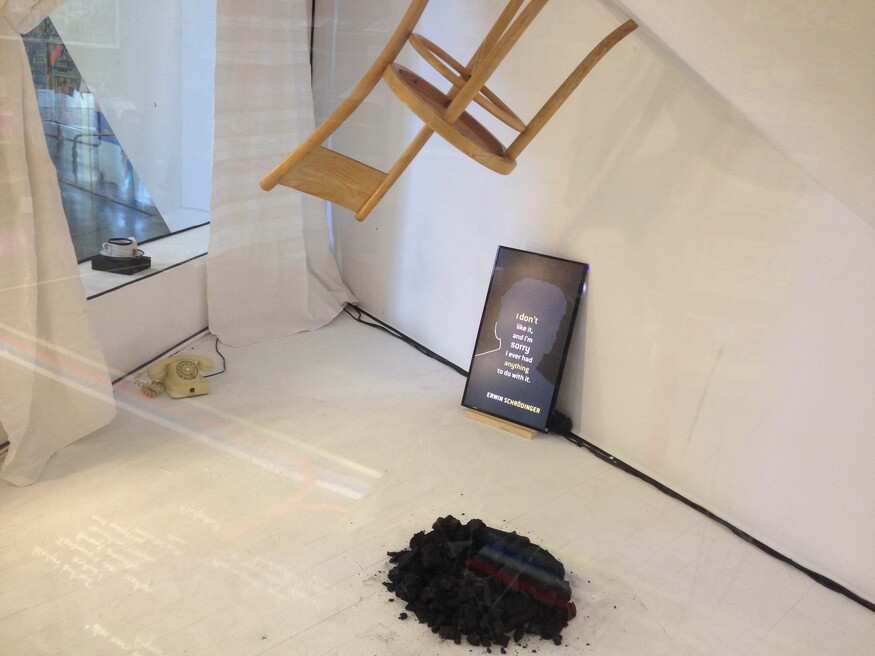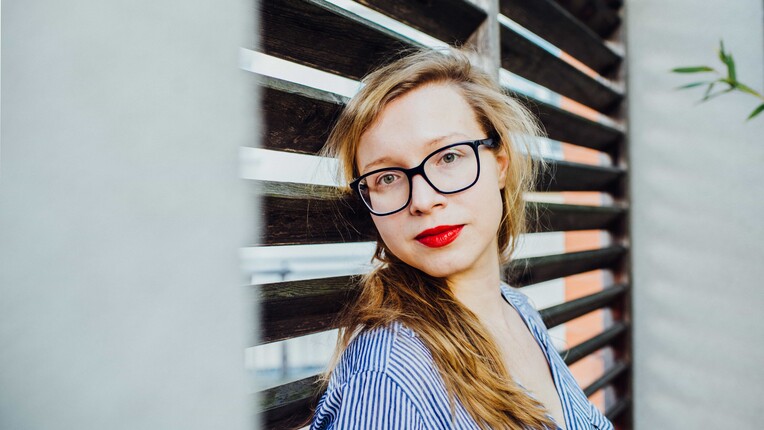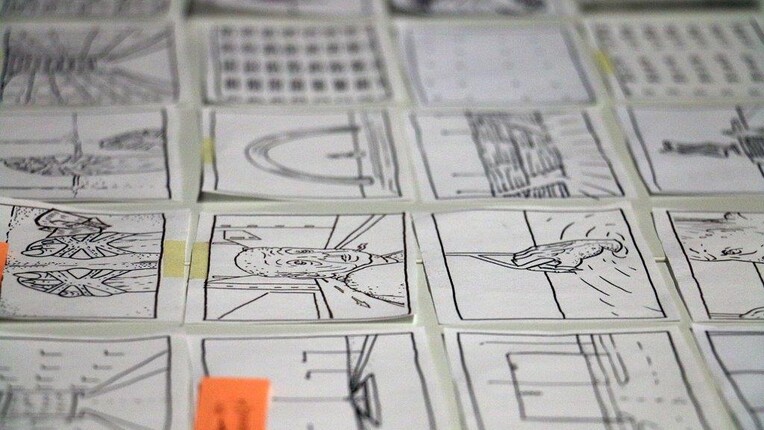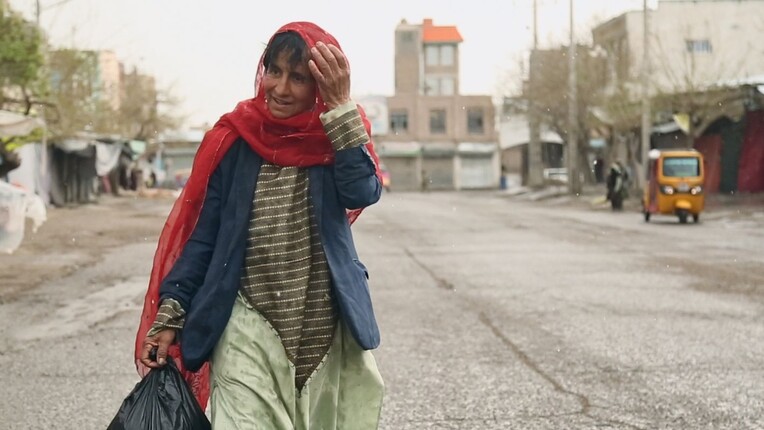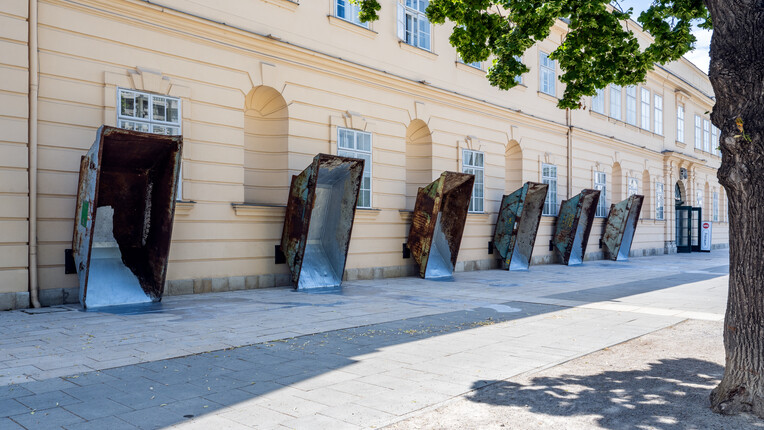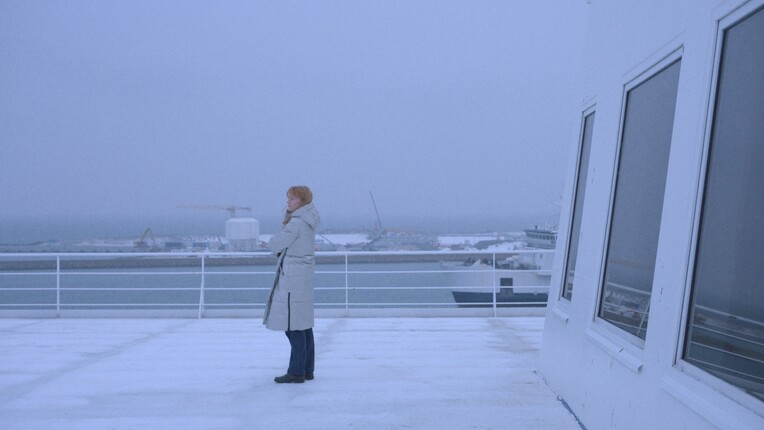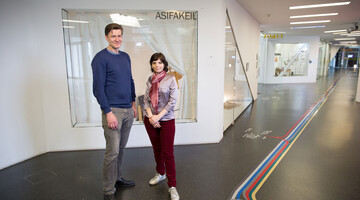
Abstraction and the Block Universe.
Artist-in-Residence Nöel Palazzo interviewed by Stefan Stratil (ASIFA AUSTRIA)
Nöel Palazzo is a curator, screenwriter, lecturer and researcher with a special interest in abstract film, and the rich intersection between Fine Arts and Media. She occasionally delves into making experimental videos and animations, and writes essays as a film critic. A couple of her short films have been awarded internationally. Invited by ASIFA AUSTRIA, she spends May and June 2019 as Artist-in-Residence in Vienna and has created an installation for the ASIFAKEIL, on display until June 23, 2019.
Stefan Stratil (ASIFA AUSTRIA): Nöel, the installation How would I know you set up at ASIFA Austria’s showroom in the MQ, the ASIFAKEIL, is based on the idea of a block universe. What is a block universe and what is your approach to that?
Nöel Palazzo: Albert Einstein posed in his special theory of Relativity (1915) that time and space are actually not separate entities, but labels we give to the four dimensions of Spacetime. In a block universe, this fabric of Spacetime is envisioned as a huge chunk of cement, or a loaf of bread. Everything that ever was and will ever be, is contained within this huge loaf. On one end we have the Big Bang, that gave rise to our universe; on the other, there is its ultimate destiny.
Nothing moves within this chunk. Every single instant in spacetime is beautifully frozen, contained inside a very thin slice of spacetime, analogous to a slice of bread in the huge loaf.
Very much like in traditional animation, where the artist draws frame after frame the various positions of a character on paper, there is actually no motion here, no passage of time. The illusion of time in film (and therefore, fluid movement) is only generated when the cells or frames are projected at a frequency of 24 per second, which is what it usually takes our eyes to completely fail to identify the separation between one image and the next. In this analogy, both the mechanism of film and the illusion of time are possible because of our eyes and brain’s physiological limitations.
The block universe implies that the past has never vanished; is right behind us. And of course, that the future is also there, right in front of us. Both are equally real. Just as with a film that has been fed to the projector before we entered the screening room, we are only able to see the current frame projected before our eyes. But both, the first shot and the final credit title, are real, already there at either end of the filmstrip. We don’t know how the film will end (most of the times, that is); we can only step into the future one frame at the time.
Because of the intuitive analogy between the block universe and the art of filmmaking, many directors and animators have tried to represent four-dimensional space on the screen; some with more success than others. In the series How would I know, which I am currently developing with Diego Margarit, we want to approach many scientific topics from various times and locations, and bring together the greatest thinkers that ever lived to discuss how certain ideas evolved and changed our understanding of the universe at each moment in time. The character Ms. Coolteacup (an empty and cold teacup belonging to the librarian in Borges’ Library of Babel) is our particular host in the series. She can step outside the block universe and slice Spacetime as she pleases, so she indulges in spying these great scientists and thinkers at work, and brings them together in an imaginary stage to satisfy her never-ending curiosity. The result is very much like a collage. The Block Universe model will be discussed amongst dozens of other topics, but on a large scale, it is mainly a contextual tool to allow for Coolteacup to put together this fantastic dream-team.
When I was invited by ASIFA to present the project at ASIFAKEIL, I thought it would be interesting to make use of its singular shape (very much like a wedge, as its name suggests ;) In this somewhat capricious space, the diagonal ceiling meets the floor on one end, slicing an imaginary rectangle into two complementary triangles. I quickly related this to Ms. Coolteacup’s ability to slice spacetime at will; every plane seems to belong to a different ‘slice’ in the loaf, and has been whimsically positioned to make them fold onto themselves or intersect.
This fractured ‘room’ at ASIFAKEIL proposes an illustration of Coolteacup’s playful approach to her unconventional research methods (as in most of my work, comedy is a big part of it). The circular pile of charcoal on the ground, a metaphor for the origins of civilization and narrative around the bonfire, seems to hint on a small scale at other patterns in nature, from large Volcanos to distant galaxies. It was looking at the ground or across the plain, trying not to hurt ourselves or be eaten by predators, that we learned to discover these patterns in nature and could relate them to other patterns in the heavens above us. I have always been fascinated by this period in time when we started to look up and wonder about the mysteries beyond our reach. It took the genius of Newton to finally realise that the physical laws that govern the motion of celestial bodies were the same as those ruling the diverse behaviour of objects on Earth.
Technology is of course a crucial topic when studying the evolution of ideas and its practical applications. As we reach the tip of our wedge at ASIFAKEIL, two paradigms get closer and intersect. Even though the inhabitants of each slice seek to solve the same problem and communicate with each other, most of the times their solutions are simply incompatible. We need to translate one paradigm into the other or, as it usually happens, tear the old one down in order to build a new one.
Paradigms have been laboriously built and demolished many times throughout history. These moments are disruptive and give rise to major social, conceptual, artistic and/or technological revolutions. Even the ‘truths’ we take for granted today might very well be torn down by new conceptions in the near future, and I believe it is always important to remember that. We need to be open to dialogue and critical thought, and learn how to live comfortably in an age where uncertainty and probability waves seem to be intrinsically woven into the structure of reality. Perhaps a block universe is a comforting thought, after all ;)
Of course, for us who are trapped within the Block Universe, without the ability to even perceive it -just as a drawn character is confined within the boundaries of the animation cell or film frame- it would not be possible to create slices of spacetime that intersect in the way they do at ASIFAKEIL. Only a distant observer outside its boundaries could dispose of the slices as presented in the installation. If we, mere humans, were to magically be endowed withthe power to see through the slices of spacetime, the immediate instances would be almost fully aligned with our ‘present’ moment, shifting from its ‘original’ position just a little bit and a little bit more as we focus our eyes on farther and farther slices. Hopefully we will be able to recreate a stylised visual model from this point of view when we discuss the Block Universe with our distinguished guests. It is a lovely and yet, monumental challenge, because Time becomes pure Space in this model, so it will be very interesting to convey this idea at a sensorial level. You have researched and worked on this topic at length. Perhaps you can tell us a bit more about what you discovered and how you would approach the Block Universe?
Lastly, since nothing will prevent us from taking a peek into the future of the cosmos, we will also be tackling the latest theories and proposals that will keep scientists very busy for the next few decades.
Abstraction seems to be your major issue, you are the director of Punto y Raya, a festival dedicated exclusively to abstract animation and abstract motion art, collaborating with most prestigious institutions and artists. Please tell us something about this unique event?
You are right, abstraction is key. Punto y Raya Festival is a biannual event that fosters Audiovisual Art in its purest state: Form, Colour, Motion and Sound. No representation! It seeks to recapture the spirit of Cinéma Pure and Absolute Film formulated by the European avant-garde in the 1920s, and consolidate this unique artform laying at the intersection between Fine Arts and Media. It was founded in 2007 by Ana Santos and myself through our non-profit association MAD in Barcelona. At that time, we weren’t very sure what the response from the artistic community would be; we simply announced this challenge: Only dots and lines (Punto y Raya); can you take it? To our amazement, we received near 90 films from 20 countries. The participants turned out to be animation students, renowned animators, filmmakers, video-artists, special FX designers, scientists, architects, composers, VJ’s, anthropologists and graphic designers. It looked like we had something special going on, though we never imagined it would become the phenomenon it is now. It was actually the participating artists and the audience themselves who encouraged us to pursue the project on a regular basis.
For over 12 years, collaborating with institutions worldwide, Punto y Raya has been continuously evolving to become the benchmark for Abstract Art in Motion and bring together the largest community in the genre. Our early festival editions were held in Spain at major institutions such as the Museo Nacional Reina Sofía in Madrid or CCCB Center for Contemporary Culture in Barcelona. Since 2014 we have been invited to co-produce it in a different country each time. To this date: Iceland (Harpa, Reykjavík), Germany (ZKM, Karlsruhe) and Poland (CeTA, Wroclaw). There are also a couple of spin-off events that we carry out when the opportunity arises, like the Academy edition (international symposium) and the Junior edition, where the contents are created BY children aged under 13. As a matter of fact, our second Junior edition will be coproduced this October by CeTA (Audiovisual Technology Center) in Wroclaw, and our call for abstract animations is currently open!
Last year we also launched the PyR TV platform, a comprehensive Online Catalogue and Resource Centre. I kindly invite everybody to check it out. As our other festival activities so far, it’s completely free :)
Some time ago you gave a most impressive talk at the Under the Radar Festival about the neurobiological foundation of abstract art. What is your personal background in this sense and why is abstraction of such interest for you?
In a way, I am very much like Coolteacup :) I’m curious by nature and I search for multiple sources dealing with various topics I find of interest. My professional background is in filmmaking and script writing, so I have no formal training in scientific endeavours. I have been fascinated by science, though -mainly physics- ever since I can remember, and have been researching various aspects of it for over 25 years. In my work I tend to bring these worlds together one way or another, so it’s no mystery why I mainly work in projects dealing with abstract art and science fiction.
That particular talk you mention at Under the Radar 2015 was titled ‘Holy Blazes! What we see when we are blinded’. As the title suggests, it discusses the neurophysiology of human vision (amongst perhaps, ‘too’ many other topics I tossed out there), and how our brains interpret and structure the information we receive visually, especially when part of it is missing. My father, Arturo Palazzo, is an Argentinean ophthalmologist and researcher, and his input for this talk was invaluable. Over the years I kept pestering him with questions about eye maladies, disfunctions in the cerebral cortex and other such topics. I was particularly fascinated by the common type of visual hallucinations that people all over the world suffer when part of their physiology is damaged, either in the brain, optic nerve or the eyes themselves. Many patients experience the same type of underlaying patterns in those areas where there is no visual input, such as grids, flashing dots, wavy lines or spirals. Scintillating scotomas for example, are quite common amongst migraine sufferers. They display beautiful wavy patterns on one or both eyes, which slowly expand outward from an initial flickering light near or in the centre of the visual field. This majestic lightshow (not necessarily accompanied by headaches, fortunately) sometimes prevents the patient from seeing the world outside; in other cases, it is overlaid onto the ‘real’ light signals coming from outside.
Many of these grids and angular patterns have been depicted over and over in ancient civilisations, and it doesn’t take a big leap (for me, at least), to imagine the impact these visions might have had on our ancient ancestors. Interestingly enough, these patterns are also perceived by people in altered states of consciousness, whether induced by drugs, meditation or shamanic trance. Many of the earliest abstract markings, patterns and dots can be found drawn or carved either on their own, or on top of more representational depictions. When on their own, they are usually found in very confined spaces, carved or painted by someone who was probably trying to immerse him/herself into some kind of primitive isolation tank, perhaps waiting for these visions to appear, ready to tame them, fix them against the rock.
This is what triggered me to research the connection between physiology and abstract markings in ancient tribes, studying motifs found in cave paintings, tattoos, utensil & garment decorations, etc.
The capacity for Abstraction is inherent to all human beings; it is, I’d claim, what actually makes us human. I am fascinated by these essential things that we all share as humans; that transcend language, culture, age, gender, race… and allow us to connect with each other on a deep level.
I think that abstract art and animation can take us back to this primordial way of ‘sensing’ the world. And to be able to bask into the artists’ thoughts and feelings in a very intimate way. It certainly appeals not only to the intellect, but also to the deepest aspects of our beings; to that part of us that creates metaphor and finds delight in mystery.
Is there a connection between the two topics abstraction and the block universe?
Of course! All models of our universe (and of any system, for that matter) are abstractions created to represent and structure the essential elements found in the complex behaviour of Reality. We cannot physically grasp all the information presented to us, so we do the next best thing: we strip it to its most essential characteristics as long as the model keeps displaying the same behaviour (or the closest to it, I should say).
Without abstract thought there cannot be language, science or art. Without abstract animation and data modelling we cannot gain new insights into increasingly complex sets of data, as we probe deeper and deeper into the nature of reality.
Is the residency in Vienna inspiring for you? What are your future projects?
This residence is a fantastic respite from everyday world. Ever since I arrived in Vienna I’ve been fully immersed in my art projects and the vibrant cultural life of the city. It also provides opportunities to collaborate and discuss ideas with top-notch artists and scientists from various fields, and this is always a great source of inspiration and food for thought.
As I keep working on the How Would I know? series, we are also developing Punto y Raya Festival 2020, which -if everything goes according to plan- will take place next October here in Vienna, coproduced by ASIFA Austria. We are very much looking forward to collaborating with local artists, researchers and institutions to bring this project to life. Austria is one of the pioneering countries in the production of the genre, with an exquisite tradition of abstract film. So it will be a very gratifying experience to engage the local artistic community and general audiences in this project. It is also a perfect excuse to continue our ongoing collaboration with Austrian institutions and artists at the various instalments of Punto y Raya.
